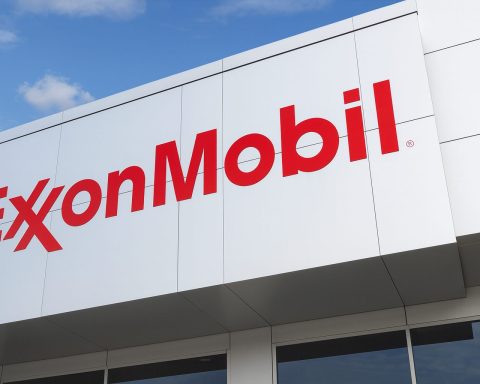- Latest Price: On Oct 30, 2025 VOO closed at $625.24 [1] (nearly 17% above its year-start level).
- Year-to-Date Return: ≈16–18% YTD (as of late Oct), on par with the S&P 500’s gain [2] [3].
- Multi-Year Performance: Strong longer-term gains – roughly 23.6% annualized over 3 years [4] and 16.5% per year over 5 years [5]. Since its 2010 inception VOO has averaged ~14.7% annualized [6].
- Assets and Yield: VOO holds ~$790–800 billion in assets [7], charges only 0.03% in fees, and pays about 1.1% in dividends [8].
- Top Holdings: Like the S&P 500, VOO is dominated by Big Tech (Apple, Microsoft, Nvidia, Amazon, Google, etc.), which together account for roughly 20% of its weight [9].
- Fund Flows: Despite robust performance, some rotation is underway: early October saw ~$1B weekly outflows from VOO even as its price rose, while Vanguard’s broad-market ETF VTI drew similar inflows [10]. Core S&P 500 funds like VOO and IVV remain in high demand overall [11].
VOO tracks the S&P 500 Index (500 large-cap U.S. stocks) and has roughly the same YTD return as its peers SPY and IVV (around 16% [12] [13]). By contrast, the tech-heavy Nasdaq ETF QQQ is up ~22.5% YTD [14], reflecting the AI-driven rally. An ETF flow report notes that VOO’s ~$625 price (Oct 10) reflects the S&P 500’s ~15% gain in 2025 [15]. Importantly, VOO has led all U.S. ETFs in inflows year-to-date (over $80 B in 2025) as investors favor its ultra-low 0.03% fee [16] [17].
Recent Performance and Trends
Through October 2025, VOO has logged steady gains. It’s roughly 16.0% above its Jan 2025 level [18] (and even higher by some counts – 18.0–18.4% YTD [19] [20]). The 1-year and 5-year returns are similarly robust (VOO up ~17–20% in the past 12 months [21], and ~96–97% over 5 years [22]). In October specifically, VOO recently climbed with the broader market: for the week ending Oct 28 it was up about +2.5% [23]. Tech rallies have helped – for example VOO rose 1.2% on Oct 27 as Nvidia, Microsoft, Apple and others lifted the market [24]. TipRanks notes VOO is up ~2.3% in the past 5 trading days [25].
However, Thursday Oct 30 saw a pullback: Wall Street indexes fell as Meta (META) plunged ~11% and Microsoft fell ~3% on cautionary earnings guidance [26]. VOO’s price eased with the S&P; as of Oct 30 the S&P 500 closed down ~1.0% to 6,822 (still near record levels). According to one strategist, investors were “in a risk-off mood after the market’s been on a run,” noting that even though the S&P is “near a record high,” recent tech earnings “didn’t meet the elevated expectations” [27].
Fund Flows and Investor Positioning
Fund flows show investors reallocating within U.S. equities. In early October, about $1.0 B flowed out of VOO (despite a slight price gain) while $1.0 B flowed into VTI [28]. This suggests some investors are shifting into broader-market exposure (VTI includes mid- and small-caps) even as both funds return ~15% YTD [29]. Cost and diversification are key: all these Vanguard funds charge only 0.03%, versus 0.0945% for SPY [30]. As one analysis notes, “rival funds from Vanguard and BlackRock have surged ahead, attracting billions thanks to 0.03% expense ratios”. VOO itself remains a magnet for flows: an October ETF report finds VOO (with ~$790B AUM) “remained a primary destination for inflows,” reflecting its 16.03% YTD gain and status as a core S&P holding [31]. In fact, Vanguard’s S&P fund (VOO) plus its mutual-fund equivalent account for well over $1 trillion in S&P assets [32].
Sector composition drives both fund performance and flows: tech megacaps (Apple, Microsoft, Nvidia, etc.) make up ~40% of VOO’s value and have powered its gains [33]. For example, Nvidia is up ~40% YTD (on a 1,200% move since 2023 [34]), reflecting the AI surge. These giants are embedded in VOO, so their “extremely bullish” outlook helps lift the ETF. At the same time, some investors rotated into tech-sector ETFs: the Technology Select Sector SPDR (XLK) is up ~29% YTD and saw $396M inflows by Oct 30 [35].
Macroeconomic and Market Context
VOO’s rise is underpinned by benign macro tailwinds. Inflation has moderated (last reported ~3% in August [36]), and interest rates have begun to fall. The Fed cut its benchmark rate by 0.25% on Oct 29 (to 3.75–4.00%) [37], citing slowing job gains and stabilized but still-elevated inflation. Fed Chair Jerome Powell left the door open for more cuts but cautioned that a December cut is “not a foregone conclusion” [38] [39]. Markets initially expected a December cut, so Powell’s tone briefly spooked investors. Overall, however, lower rates have supported stock valuations. A Wall Street commentary notes that these Fed moves have “reduced borrowing costs” and “made equities more attractive relative to fixed income” [40], helping power the S&P to new highs.
Sectoral factors also matter. Corporate earnings have been solid: Q3 S&P 500 profits are running about +12.5% year-over-year [41], and 83% of companies have beaten estimates so far. Tech firms in particular are benefiting from skyrocketing AI investment (major tech companies are spending heavily on AI, which boosts analyst expectations). As Magellan’s Jonathan Soden notes, “Lower interest rates” and “AI-driven capital expenditures” are key drivers right now [42]. Even amid some headline worries (trade tensions, election-year uncertainty, etc.), the market has been resilient: “2025 has proven that disciplined investors who stayed the course were rewarded, while headlines often served more as distractions than indicators of long-term value” [43].
At the same time, valuations are rich. The S&P 500’s forward P/E has climbed above 23× [44] – its highest level since the dot-com bubble – which implies investors are paying up for earnings growth. Edward Jones strategist Angelo Kourkafas warns that with valuations near ceiling, “earnings will have to do the heavy lifting to drive returns” from here [45]. This caution is echoed by market watchers like Michael Burry, who has tweeted that even if a bubble exists, “sometimes the only winning move is not to play” [46]. Burry’s warning underscores the flip side of the rally: AI-fueled speculation has sent mega-caps and the S&P to record highs [47], but some investors fear a pullback.
Comparison with Peers
VOO’s performance closely mirrors that of SPY and IVV (the other large S&P 500 ETFs). All have returned roughly 16% YTD [48] [49] [50] and trade with negligible tracking differences. The expense advantage (VOO/IVV at 0.03% vs SPY’s 0.0945%) has fueled inflow shifts – SPY had record $32.7 B outflows in 2025, while VOO and IVV captured billions [51].
By contrast, the Nasdaq-focused QQQ (with heavier tech weighting) has far outperformed, up ~22.5% YTD [52]. Meanwhile, the Vanguard Total Stock Market ETF (VTI) – covering virtually the entire U.S. equity market – has also tracked around +15% YTD [53]. Notably, VTI recently passed $2 trillion in assets, suggesting investors’ desire for even broader exposure [54]. Many view VOO, IVV, SPY, and VTI as interchangeable core holdings, but with slight differences: VTI adds mid/small caps, QQQ adds tech concentration.
Technical Analysis
Technically, VOO remains in a strong uptrend. It’s trading well above its longer-term moving averages: the 200-day simple moving average (SMA) sits about 11.7% below the current price [55], and the 50-day SMA is ~2.8% below [56]. The ETF’s 14-day RSI is around 60 [57], indicating neither overbought nor oversold conditions. Volume and volatility are moderate (14-day ATR ~$6.4 [58], beta ~1.01). Overall the chart is bullish: price near its 52-week high ($634.13 [59]), supported by bullish momentum.
Fundamental Analysis
Fundamentally, VOO simply mirrors the S&P 500 index, so its makeup and valuation are those of the U.S. large-cap market. The index’s aggregated earnings growth and dividend yield (~1.1% [60]) flow through to VOO. Given its minuscule expense ratio (0.03%) and tax efficiency, VOO is often lauded as a “cost-free” way to own large-cap stocks. Its holdings are broadly diversified across all S&P sectors (though tech is top-weighted). Valuation-wise, the S&P’s elevated P/E (mid-20s forward) suggests a premium to history, but record corporate profits help justify it. The ETF’s track record (CAGR ~14.7% since inception [61]) highlights the power of broad U.S. equity ownership – a figure far above what cash or bonds offer today.
Recent News & Expert Commentary
Fed and Macro: On Oct 29, the Fed cut rates 0.25% (the first cut in over a year) [62]. Powell’s accompanying statement was cautiously optimistic but noted “downside risks to employment” and stopped short of committing to more cuts. That tempered market exuberance: “weaker [Fed] guidance” helped shake investors on Oct 30 [63]. Still, analysts stress the supportive backdrop. As one Wall Street commentator notes, “lower interest rates” and “corporate earnings upgrades” have underpinned markets, with AI spending further fueling confidence [64].
Tech Earnings: In late Oct, the tech earnings cycle provided drama. Meta plunged 11% after warning of much higher spending [65], and Microsoft’s shares dipped on massive AI capex [66]. These swings led to a roughly 1% drop in the S&P on Oct 30, as Lindsey Bell observes: “The S&P 500’s near a record high but these technology earnings didn’t meet the elevated expectations” [67]. Conversely, late Oct earnings from Apple and Amazon beat forecasts (Apple’s iPhone was strong; Amazon’s AWS cloud drove profit), sending their shares sharply higher in after-hours trading. This gave a lift to futures heading into Nov, hinting at upside carryover from the tech beatings.
Bubble Warnings: On Oct 31, famed investor Michael Burry (of “Big Short” fame) weighed in on social media, cautioning that markets might be in a bubble. “Sometimes… the only winning move is not to play,” he tweeted [68]. Burry’s cryptic warning, amid Nvidia’s meteoric rise, has been noted by pundits as a reminder of elevated valuations. It underlines that some experts see the tech-fueled rally as potentially overheated.
Analyst Views: ETF analysts remain broadly positive on VOO. TipRanks’ consensus rates VOO a Moderate Buy – its analysts’ average price target is ~$690–703, implying roughly 10–11% upside [69] [70]. (This reflects a continuation of the current bull trend.) Some strategists caution that with stock prices already high, further gains depend on sustaining earnings growth. For example, Angelo Kourkafas of Edward Jones says if valuations are at a ceiling, “earnings will have to do the heavy lifting to drive returns forward” [71].
Outlook and Forecast
Looking ahead, many strategists believe year-end stock gains could continue, albeit at a slower pace. Historically November and December have been strong months for equities [72]. The Fed’s path will be crucial: another cut (expected by many) could prop up stocks, while a pause could cool sentiment. If AI spending and economic growth stay solid, analysts see room for mid-to-high single-digit gains. For instance, TipRanks’ ETF models imply moderate upside: VOO’s price targets average ~11% above current levels [73] [74]. Of course, risks remain (valuations, possible Fed hawkishness, global uncertainties), so most experts advise a balanced approach. In summary, Vanguard’s VOO remains a cornerstone for U.S. stock investors, and current trends suggest it could extend its rally – especially if Big Tech and rates stay favorable. As one recent analysis puts it: “With its low costs and broad market coverage, VOO continues to attract funds even as markets hit records” [75] [76].
Sources: Data and quotes above are drawn from recent market reports and news. Key sources include Vanguard fund data [77] [78], ETF flow analyses [79] [80], Federal Reserve releases [81], and leading financial news outlets [82] [83] [84].
References
1. finviz.com, 2. www.tipranks.com, 3. finviz.com, 4. finviz.com, 5. finviz.com, 6. economictimes.indiatimes.com, 7. www.ainvest.com, 8. www.tipranks.com, 9. ts2.tech, 10. ts2.tech, 11. www.ainvest.com, 12. finviz.com, 13. finviz.com, 14. finviz.com, 15. ts2.tech, 16. ts2.tech, 17. www.ainvest.com, 18. finviz.com, 19. www.tipranks.com, 20. www.tipranks.com, 21. finviz.com, 22. finviz.com, 23. www.tipranks.com, 24. www.tipranks.com, 25. www.tipranks.com, 26. www.reuters.com, 27. www.reuters.com, 28. ts2.tech, 29. ts2.tech, 30. ts2.tech, 31. www.ainvest.com, 32. ts2.tech, 33. ts2.tech, 34. www.businessinsider.com, 35. www.ainvest.com, 36. magellanlv.com, 37. www.federalreserve.gov, 38. www.federalreserve.gov, 39. www.reuters.com, 40. magellanlv.com, 41. www.reuters.com, 42. magellanlv.com, 43. magellanlv.com, 44. www.reuters.com, 45. www.reuters.com, 46. www.businessinsider.com, 47. www.businessinsider.com, 48. finviz.com, 49. finviz.com, 50. finviz.com, 51. ts2.tech, 52. finviz.com, 53. ts2.tech, 54. ts2.tech, 55. finviz.com, 56. finviz.com, 57. finviz.com, 58. finviz.com, 59. finviz.com, 60. www.tipranks.com, 61. economictimes.indiatimes.com, 62. www.federalreserve.gov, 63. www.reuters.com, 64. magellanlv.com, 65. www.reuters.com, 66. www.reuters.com, 67. www.reuters.com, 68. www.businessinsider.com, 69. www.tipranks.com, 70. www.tipranks.com, 71. www.reuters.com, 72. www.reuters.com, 73. www.tipranks.com, 74. www.tipranks.com, 75. www.ainvest.com, 76. ts2.tech, 77. finviz.com, 78. www.ainvest.com, 79. www.tipranks.com, 80. ts2.tech, 81. www.federalreserve.gov, 82. www.reuters.com, 83. www.reuters.com, 84. www.businessinsider.com







